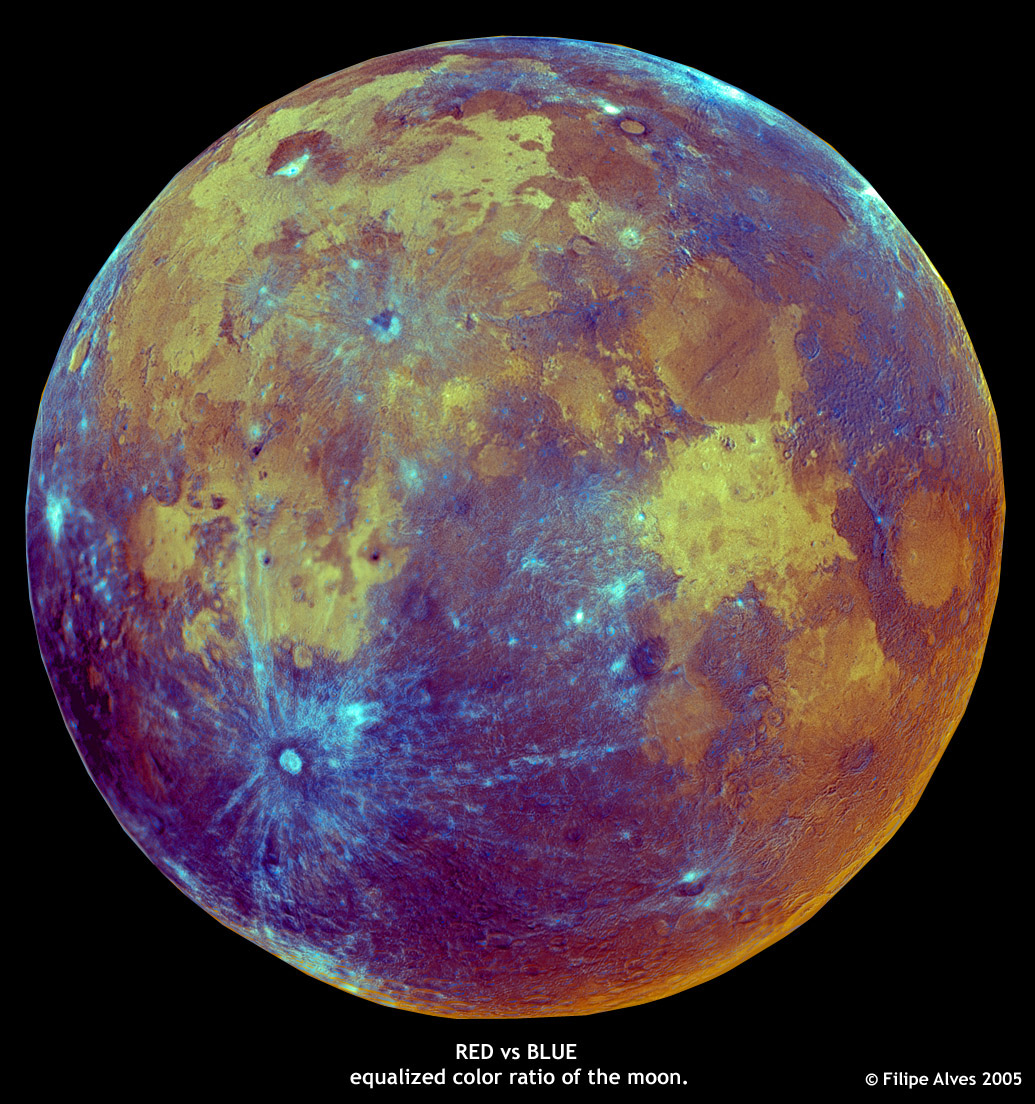|
|
| (5 intermediate revisions by the same user not shown) |
| Line 1: |
Line 1: |
| | __NOTOC__ | | __NOTOC__ |
| | =Magical Bi-Color Moon= | | =Magical Bi-Color Moon= |
| | + | <!-- Start of content --> |
| | + | <div class="post" id="post-100"> |
| | | | |
| − |
| + | <div class="storycontent"> |
| − | <div class="post" id="post-100">
| + | <p>[[File:ColorRatioMoon-Alves.jpg|Bi-Color Moon - Filipes]]<em>image by [mailto:filipe@pixmix.tv Filipe Alves ]</em></p> |
| − |
| |
| − | <div class="storycontent">
| |
| − | <p>[[File:ColorRatioMoon-Alves.jpg|Bi-Color Moon - Filipes]]<em>image by [mailto:filipe@pixmix.tv Filipe Alves ]</em></p>
| |
| | <p>This is one of the most remarkable lunar images I have ever seen. Its colors are astronishingly compelling, the rays of Tycho seem to float over the surface, and it looks like a sunset glow on the southeast limb. This magical image was taken and composed by the explorer of lunar colors, Filipe Alves. Unlike many lunar color images that are composited from separate images through three filters, Filipe made this one with only two filtered views. Here is his description: <i>Here I send you an unusual view of the moon, created by using the ratios between red and blue wavelengths translated to a luminance image; redder material is darker and bluer material is lighter, the color in the image translates the absolute albedo of the surface, with the bluish tones being bright material, and the reddish or yellowish tones darker material…. inverting all this relevant information is important because it enables one to see in detail geologic features in a way that color perception never permits.</i><br /> | | <p>This is one of the most remarkable lunar images I have ever seen. Its colors are astronishingly compelling, the rays of Tycho seem to float over the surface, and it looks like a sunset glow on the southeast limb. This magical image was taken and composed by the explorer of lunar colors, Filipe Alves. Unlike many lunar color images that are composited from separate images through three filters, Filipe made this one with only two filtered views. Here is his description: <i>Here I send you an unusual view of the moon, created by using the ratios between red and blue wavelengths translated to a luminance image; redder material is darker and bluer material is lighter, the color in the image translates the absolute albedo of the surface, with the bluish tones being bright material, and the reddish or yellowish tones darker material…. inverting all this relevant information is important because it enables one to see in detail geologic features in a way that color perception never permits.</i><br /> |
| | The Moon appears very different than in other color images. In addition to the sharp deliniation of different flows in Mare Imbrium, there are strange purple halos around Plato, Geminus and Purbach(?), there is a pie-shaped colored wedge in Copernicus, and what in the world is happening at Theophius? I do not understand all the effects in this image - it will need to be carefully compared with traditional color views to identify what is happening. But it is beautiful! Well done, Filipe!</p> | | The Moon appears very different than in other color images. In addition to the sharp deliniation of different flows in Mare Imbrium, there are strange purple halos around Plato, Geminus and Purbach(?), there is a pie-shaped colored wedge in Copernicus, and what in the world is happening at Theophius? I do not understand all the effects in this image - it will need to be carefully compared with traditional color views to identify what is happening. But it is beautiful! Well done, Filipe!</p> |
| Line 15: |
Line 14: |
| | <strong>Related Links:</strong><br /> | | <strong>Related Links:</strong><br /> |
| | [http://www.atalaia.org/filipe/luacor/index.html Filipe’s web site.]</p> | | [http://www.atalaia.org/filipe/luacor/index.html Filipe’s web site.]</p> |
| − | <p align="center"><b>SUPPORT LPOD - VISIT A SPONSOR (CLICK AN AD BELOW)!</b></p> | + | <p><b>Yesterday's LPOD:</b> [[February 21, 2006|Different Populations of Lunar Craters]] </p> |
| − | </div>
| + | <p><b>Tomorrow's LPOD:</b> [[February 23, 2006|Not Dr. Suess]] </p> |
| − |
| + | <!-- Remove click bait --> |
| − | | + | </div> |
| − | ---- | + | <!-- End of content --> |
| − | ===COMMENTS?===
| + | {{wiki/ArticleFooter}} |
| − | Click on this icon [[image:PostIcon.jpg]] at the upper right to post a comment.
| |
 image by Filipe Alves
image by Filipe Alves 


